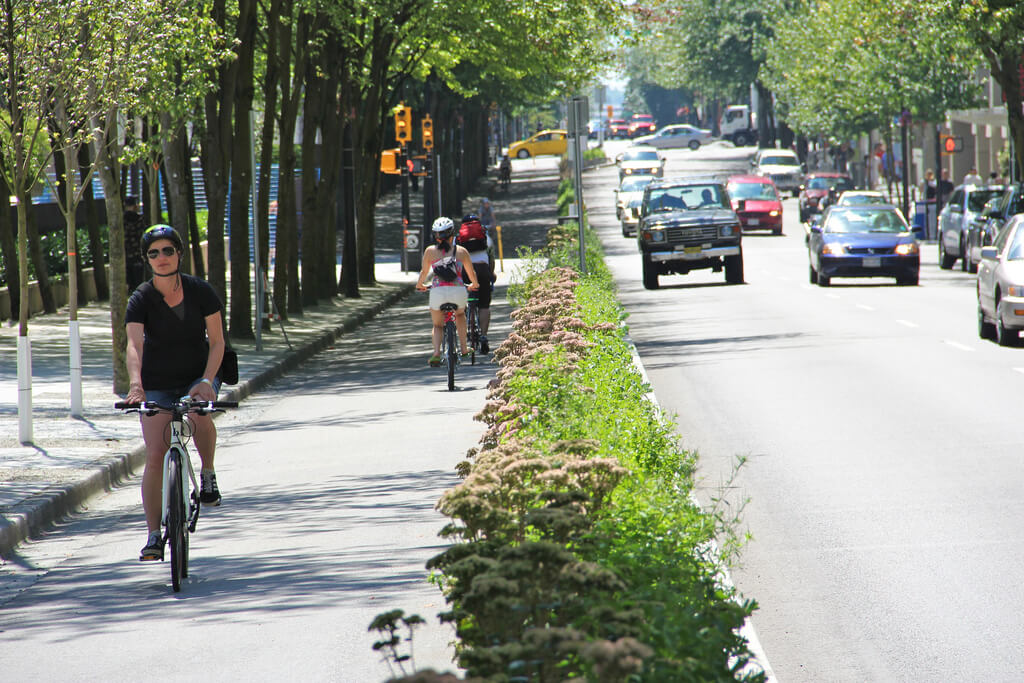Autumn Gear Guide
Find inspiration in our Gear Guide that will keep you out on your bike through wind or rain.
Download NowAs cities become more congested and people look for alternative modes of transportation, bike lanes are becoming a crucial part of urban planning. These designated lanes for cyclists are changing the way we move around our cities, promoting safety and sustainability while reducing traffic congestion. The Benefits of Bike Lanes Bike lanes offer numerous benefits […]
As cities become more congested and people look for alternative modes of transportation, bike lanes are becoming a crucial part of urban planning. These designated lanes for cyclists are changing the way we move around our cities, promoting safety and sustainability while reducing traffic congestion.
Bike lanes offer numerous benefits to both cyclists and the wider community. They provide a safe and dedicated space for cyclists to travel, reducing the risk of accidents and injuries. Additionally, they encourage more people to cycle, which can lead to improved health and reduced traffic congestion. Bike lanes also promote sustainability by reducing carbon emissions and promoting a more eco-friendly mode of transportation. However, implementing them can also present challenges, such as the need for infrastructure changes and potential conflicts with other modes of transportation.
Over the past few years, safe and protected bike lane networks have become increasingly popular in cities around the world. Many cities have recognized the benefits of them and have implemented them as part of their transportation infrastructure. In some cases, entire networks of bike lanes have been created, connecting different parts of the city and making it easier for cyclists to get around such as in many cities in Europe including Amsterdam and Paris. While there are still challenges to overcome, such as funding and public support, the growth of bike networks is a positive sign for the future of transportation.

A planter-box buffer protects Vancouver’s Hornby Street bike lane from vehicle traffic. Photo by Paul Krueger.
Bike lanes have a significant impact on traffic, both in terms of reducing congestion and improving safety. By providing a dedicated space for cyclists, bike lanes can help to reduce the number of cars on the road, which in turn can reduce traffic congestion. More protected lanes means more people leaving cars at home and opting to cycle, which is a win-win.
“The big takeaways are that micromobility could decrease congestion, especially on highly congested corridors. But you’re going to need wide-scale bike lane deployment,” said Corey Harper, assistant professor of civil and environmental engineering at Carnegie Mellon University and one of the authors of a key micromobility study.
Additionally, they can improve safety by separating cyclists from motor vehicles, reducing the risk of accidents and injuries. Studies have shown that cities with well-designed bike networks have lower rates of traffic fatalities and injuries.
Bike lanes play a crucial role in sustainable transportation by providing a safe and accessible option for people to travel without relying on cars. As cities continue to grow and traffic congestion becomes a major issue, bike lanes offer a solution that not only reduces traffic but also promotes physical activity and reduces air pollution. In addition, bike lanes can help to create more livable and vibrant communities by encouraging people to spend more time outdoors and supporting local businesses. As we look towards a more sustainable future, bike lanes will undoubtedly play a key role in shaping the way we move around our cities.
As cities continue to grow and become more congested, urban planners are recognizing the importance of incorporating bike lanes into their designs. Not only do they provide a safe and sustainable mode of transportation, but they also have the potential to transform the way we think about urban spaces. By prioritizing bicycles and pedestrian infrastructure, cities can create more livable and vibrant communities that prioritize people over cars. As we look toward the future of transportation, it’s clear that bike lanes will play a crucial role in shaping the way we move around our cities.
Find inspiration in our Gear Guide that will keep you out on your bike through wind or rain.
Download Now
Leave a comment